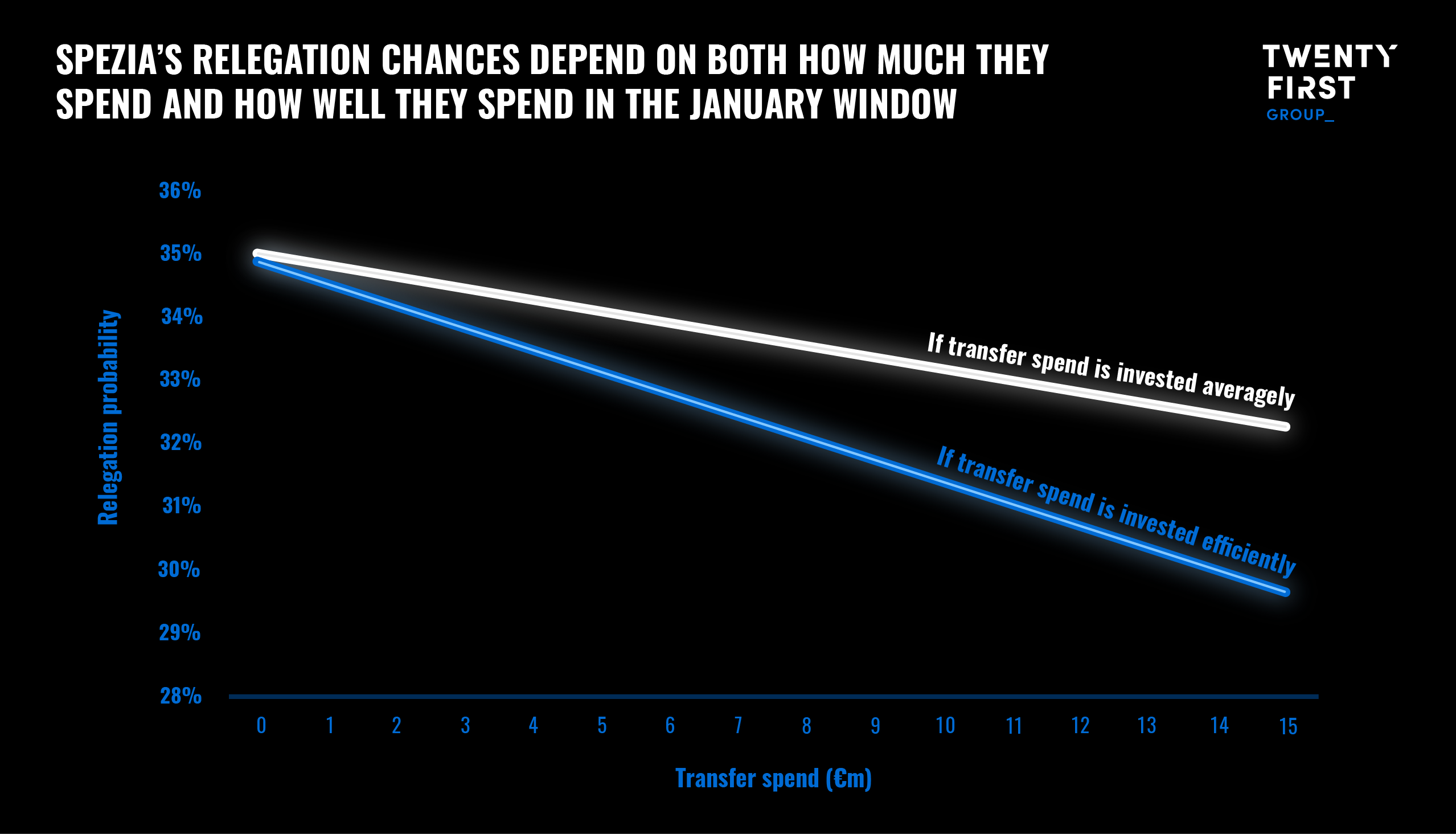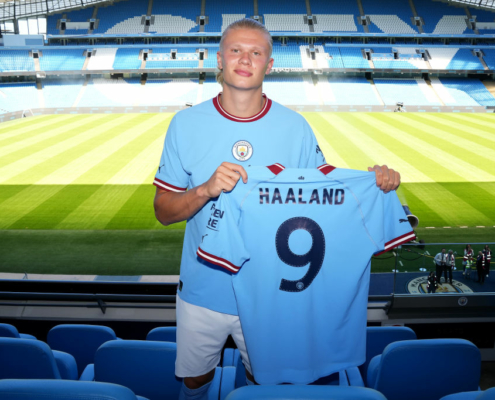Thought Leadership
How to use the January Window effectively to avoid relegation
5 MIN READ
Thought Leadership
Inspired by what you’re reading? Why not subscribe for regular insights delivered straight to your inbox.
Spezia have so far defied the odds to survive back-to-back seasons in Serie A, having never played in the top flight before 2020. In 2023, they face a third consecutive relegation battle, and owner Robert Platek faces questions on how best to evaluate and influence the short-term needs of the club through the January transfer window.
We’ve developed a methodology that helps owners and boards build a transfer window strategy. Specifically, our modelling enables clubs to quantify the likely performance return of any investment, and therefore determine how and how much to invest in the squad and/or other sporting operations. In January this is particularly important given demand for talent outstrips supply, leading to premiums often in excess of 20%.
The starting point for any club is to recognise risk in the form of probabilities. According to our league projections, Spezia have a 35% chance of being relegated as things stand today. Any significant changes to the squad or operational approach only serves to manage that risk; football is a low-scoring sport, and even if Spezia were to play well for much of the rest of the season, bad luck in just a few games would be enough to relegate them. Any changes or spending is therefore designed to reduce the impact that bad luck can have.
Our methodology allows us to understand how much spending really does mitigate that risk. We know, for example, that net transfer spend in January has just a 5% positive correlation with change in points per game, and that €20m in net spending has delivered on average just a 0.03 increase in points per game in the big 5 leagues since 2015.
Looking specifically at Spezia’s squad and situation, our models suggest that €5m of investment into the team would only reduce their chances of relegation to 34%. That assumes the money is spent as efficiently as an average club; if Spezia can identify players whose true value is €14m but at a cost of €7m – perfectly achievable with a smart player scouting and recruitment process – their relegation chances drop towards 30%. The difference is small but potentially significant in expected future broadcast rights, matchday, and sponsorship income over the coming years.
The challenge then becomes identifying undervalued players, and differentiating between price and value, which we have written about here. Smart use of data is critical in January, to look where others are not and to understand the impact specific players could have on the club.
This framework to evaluate spend works for all clubs, and can also be used to help evaluate the need for another type of recruitment: head coaches. Strasbourg, for example, are suffering a poor second season under Julien Stéphan, and have a 44% chance of being relegated. Investing €10m in the squad would only marginally improve these odds to 42%, whereas a 5-10% increase in player performance – perhaps achieved via a head coach change – would improve these odds to around 32%. This also serves to highlight the impact if improving the resources you already have compared to investing in talent that may or may not be a perfect fit for the club.
The instinct in January is to react big to results so far, but understanding just how big is enough to swing the odds in your favour is critical to enjoying a successful season.
If you would like to find out more about our performance intelligence services and how we can help your club in the transfer market, please get in touch with Omar Chaudhuri.







